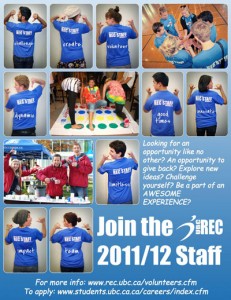My brother currently lives in Montreal and he was home in Vancouver over Christmas. During a conversation one day he mentioned that he gets a weekly delivery of fresh vegetables that are grown in a rooftop greenhouse in Montreal. It sounded pretty cool at the time but I hadn’t though about it again until now. I found a TED Talk given by the founder of Lufa Farms in Montreal which was the first rooftop commercial greenhouse in the world. The entire talk can be seen below.

Mohamed Hage is the founder of Lufa Farms and the man in the TED Talk above. He starts the talk off by discussing the idea that urban agriculture isn’t actually anything new but rather the recreation of something very old. The Lebanese village that he grew up in was self-sustaining which is essentially the long-term goal of urban farming.
We have come so far from living in self-sustaining villages where the only food consumed is whatever is available. In fact the food that we eat now travels an average of 1500 miles to get to our plate. Another interesting fact is that because of the amount of travel necessary for produce, varieties are chosen based on toughness and transportability rather than flavour. This means that the difference between planting a tomato in a greenhouse and choosing from 500 varieties we now have 12 varieties available to us at the grocery store.
When Mohamed Hage first decided to build a greenhouse on the roof of a downtown Montreal warehouse he came up with four steps or objectives for responsible agriculture.
1) Using no new land – the roof is unused space with a lot of potential.
2) Using water more responsibly – harvest rain water and recirculate nutrient-rich water with a closed loop system.
3) Use no pesticides, herbicides and fungicides – instead use insects such a ladybugs to attack the bad insects!
4) Good food – grow varieties you can’t get at the grocery store.
The greenhouse now feeds 2000 people everyday using only $15 of fuel a day with vegetables that have never been refrigerated.

Urban farming is getting more and more attention as a possible solution or part of the solution to feed our ever growing population with less land. There is huge potential for commercial rooftop greenhouses in cities around the world, however the difficulties arise in convincing consumers to eat seasonal food that can be grown in their climates. This involves increasing awareness among consumers so that they understand the benefit of paying a premium price for organic, locally grown food.
The 100 mile diet is a great way for consumers to get themselves thinking about the kinds of food that are the most sustainable for them to eat by supporting local farmers whether urban or traditional. A truly sustainable diet would consist of eating food produced in a short distance from where a consumer lives, which also means only eating food that is currently in season.
Urban farming is making this goal much more achievable but it is still extremely difficult to convince consumers to eat locally grown food when they can get their favourite tropical fruits at their local grocery store for a reasonable price. As a consumer who The focus needs to be on raising awareness among consumers and the benefits of eating organic, locally grown food.




 Karma Exchange
Karma Exchange Good Guide
Good Guide Ethical Deal
Ethical Deal





 for UBC REC is coming up and this has really made me realize the power of positive word of mouth as well as the promotion of an organization through social media. It also shows how if you combine multiple people with large networks on campus how the audience you are reaching can be larger than you ever imagined.
for UBC REC is coming up and this has really made me realize the power of positive word of mouth as well as the promotion of an organization through social media. It also shows how if you combine multiple people with large networks on campus how the audience you are reaching can be larger than you ever imagined.